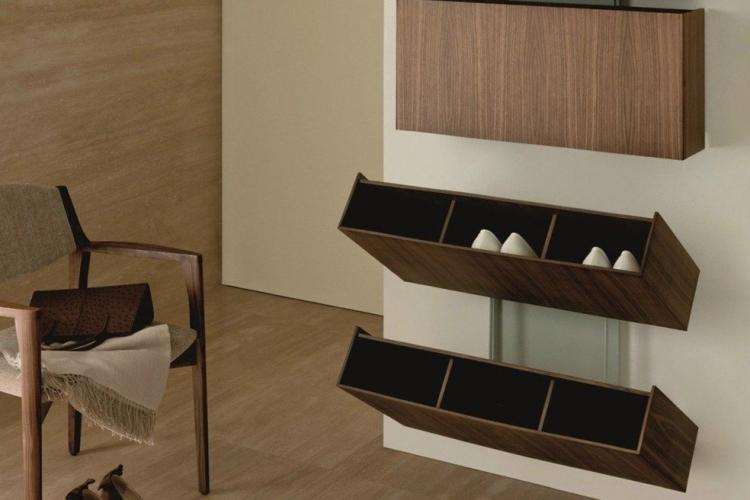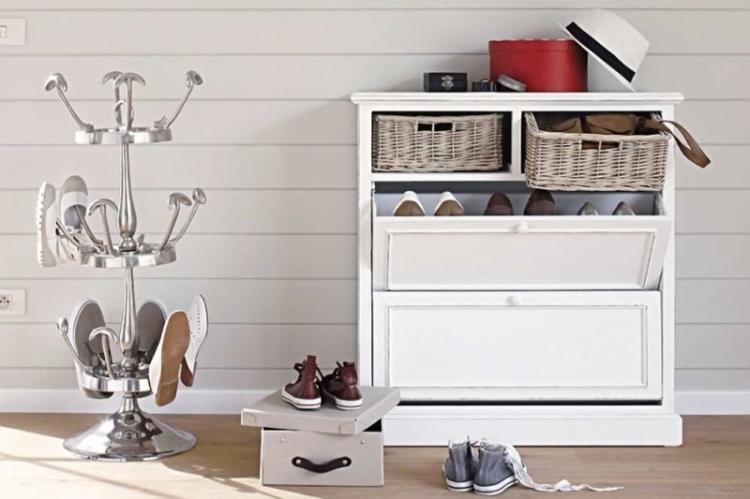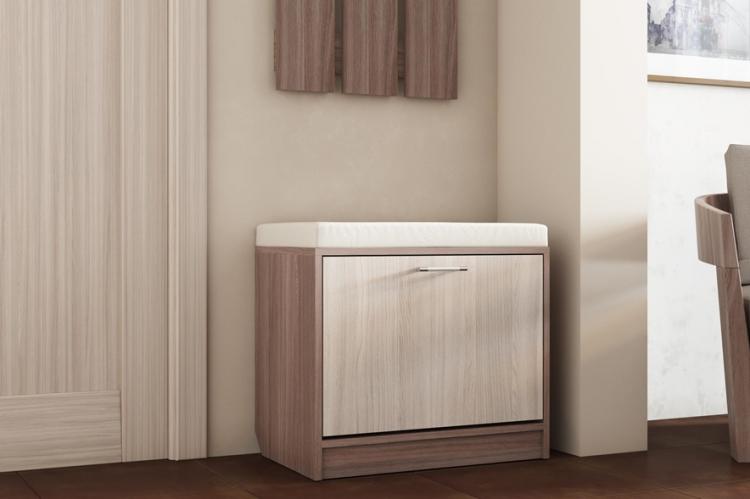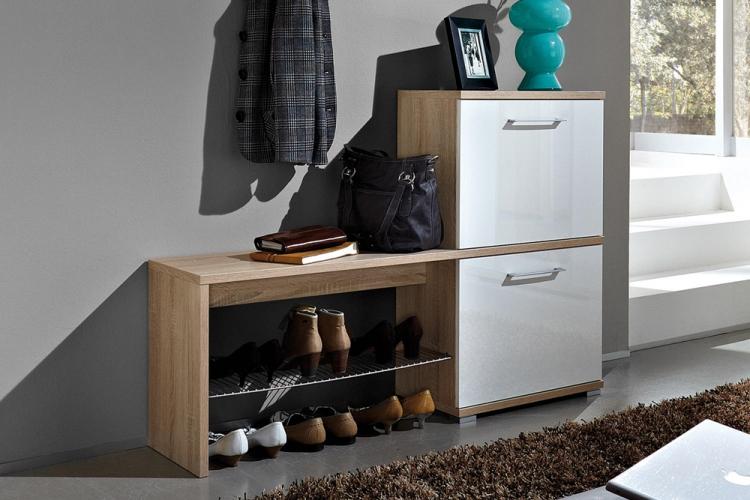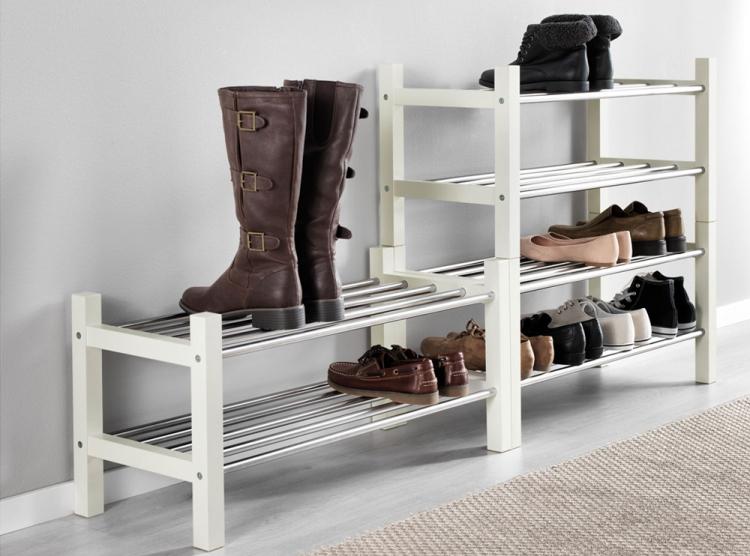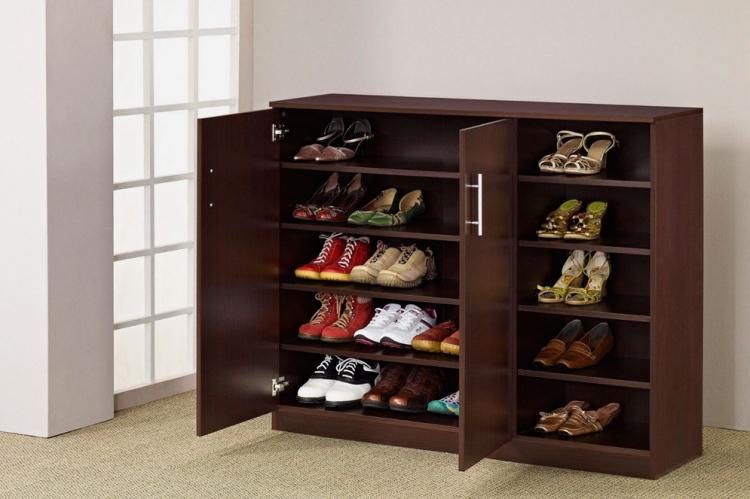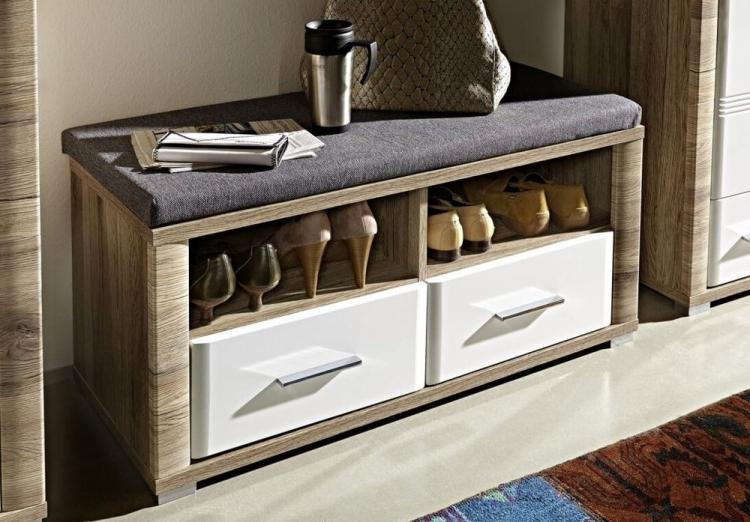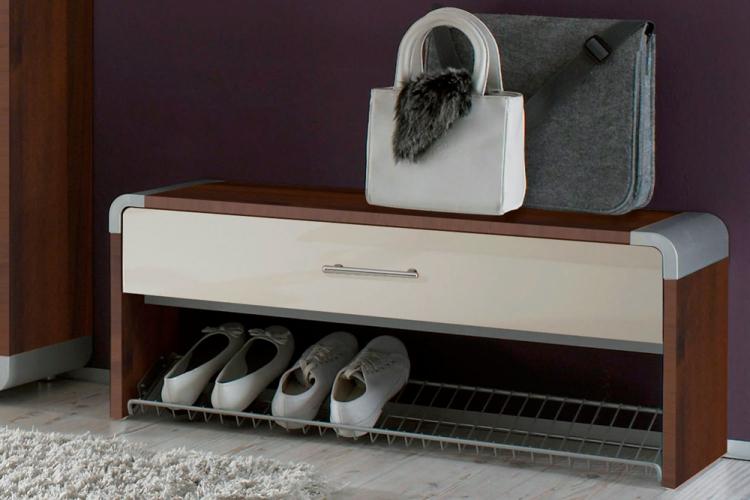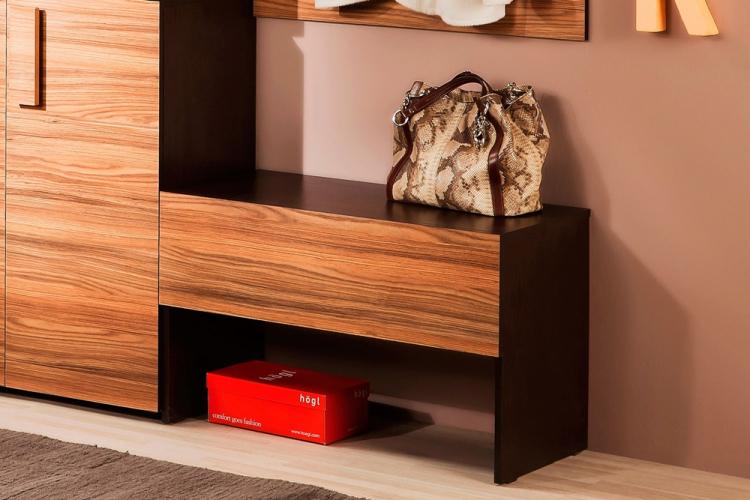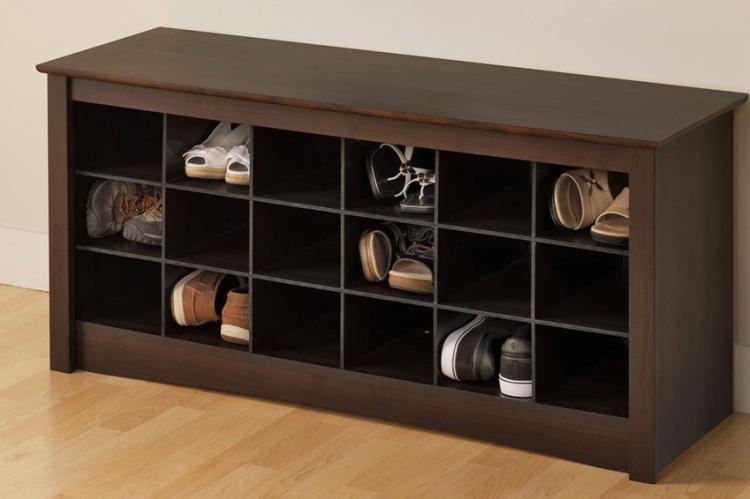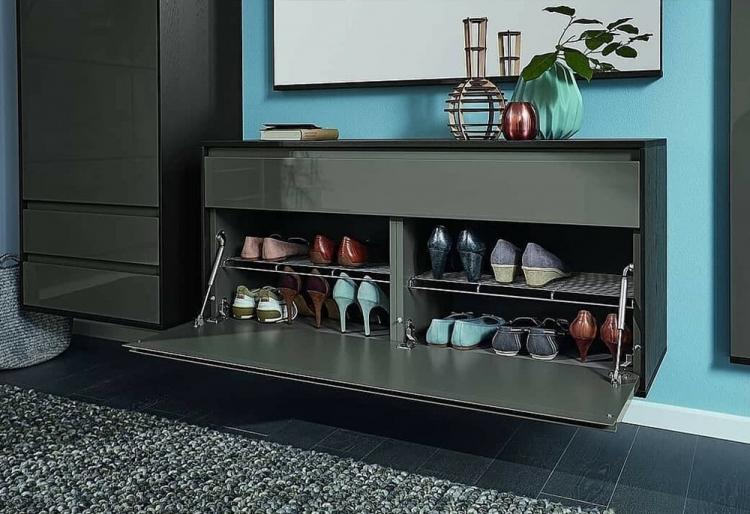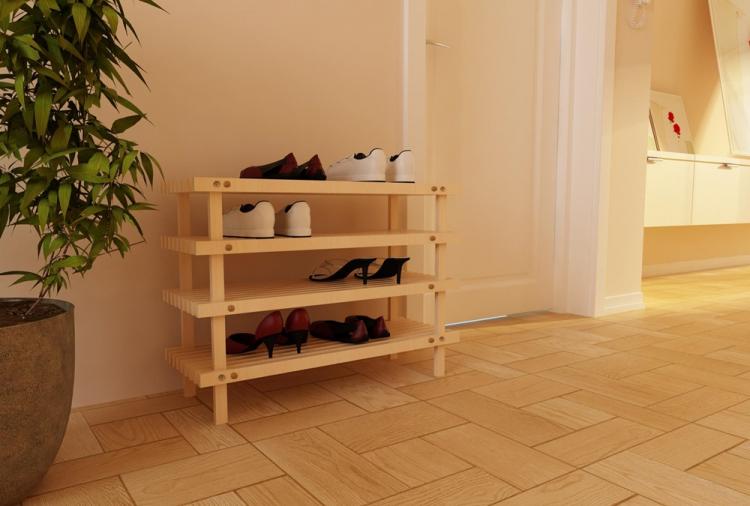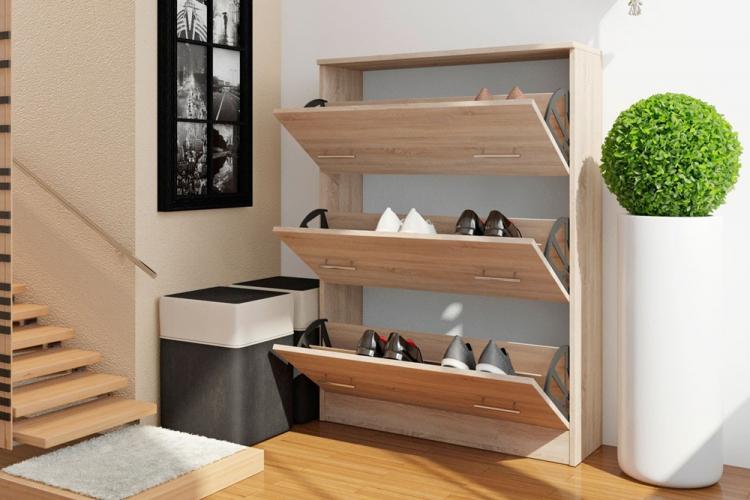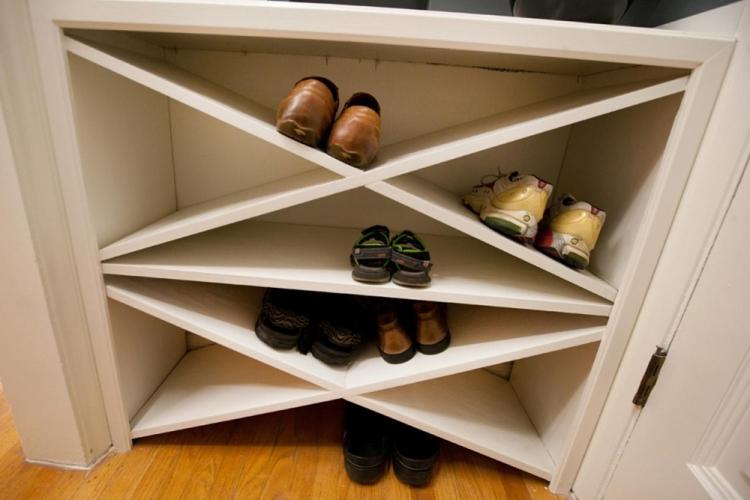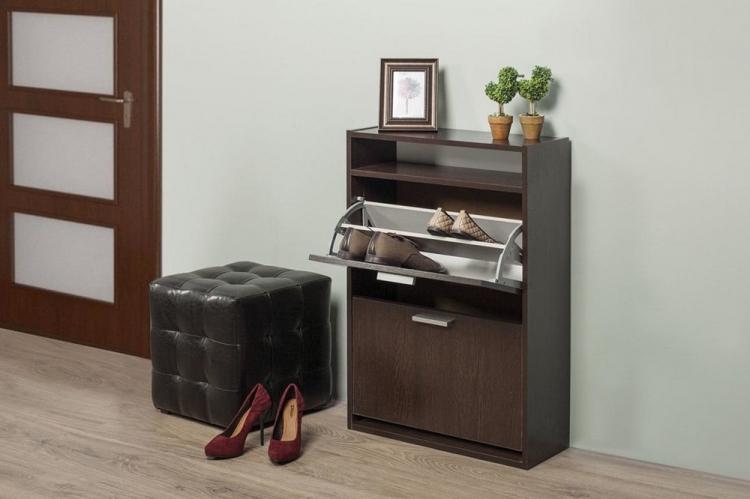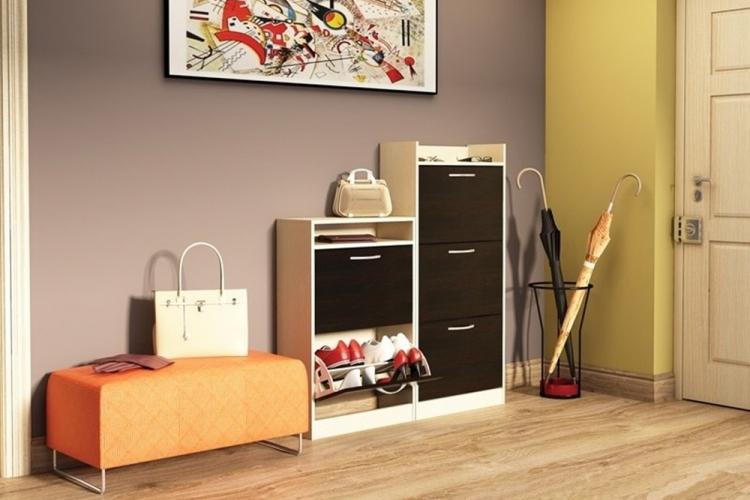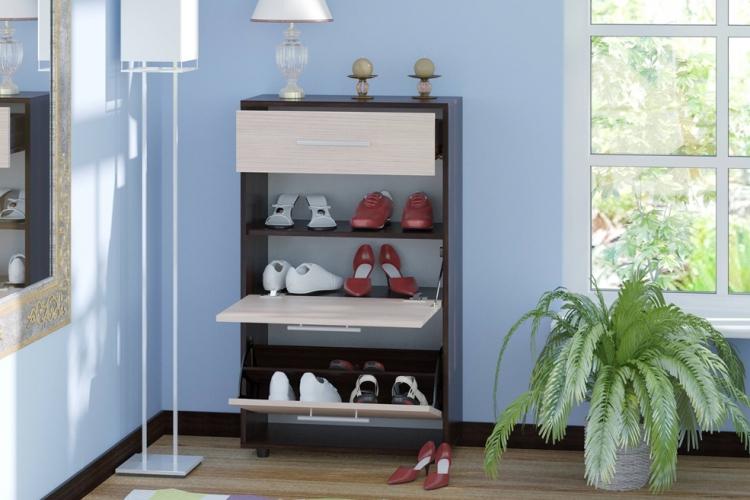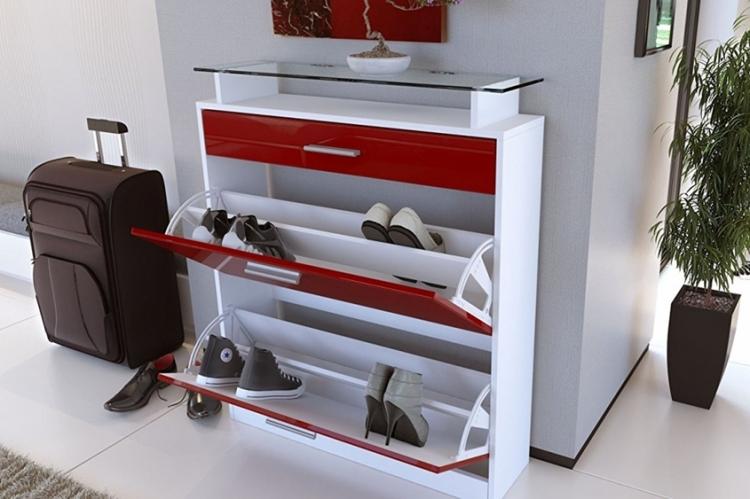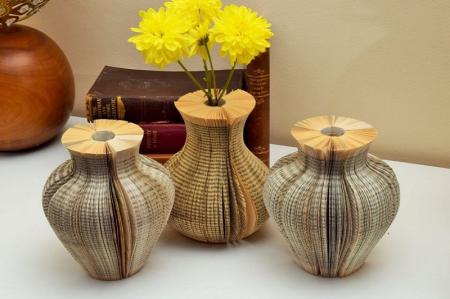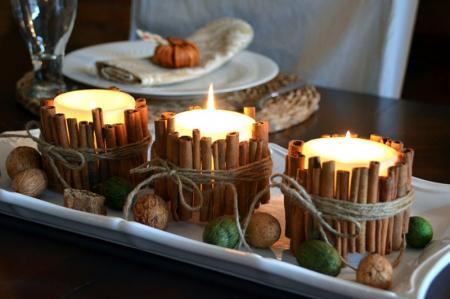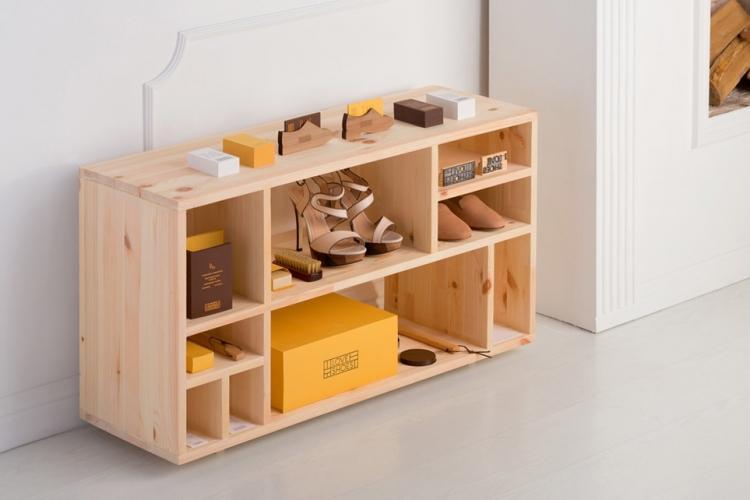
Outdoor shoes scattered all over the floor mixed with house slippers are an eternal problem in most hallways. It is ugly, inconvenient and unhygienic. You constantly have to stumble, worry about expensive shoes, or that your pets will unexpectedly ruin your favorite boots. Is this a familiar problem? But solving it is easier than ever - especially for this, shoe racks are placed in the hallways. And we will tell you what they are!
Types and models of shoe racks
To choose the right shoe rack, you need to consider the size and layout of your hallway. These can be vertical or horizontal, closed or open structures. And they all have their advantages and disadvantages.
Open shelving
This is a stationary rack for several sections, which used to be called galoshes. They are simple, practical, affordable and inexpensive, and the top tier can be used as a seat or instead of a shelf. Shoes are constantly ventilated and dry well, but at the same time, dust can accumulate on them.

Stands for shoes
The stand differs from the rack in the absence of any stationary frame structure. These are guides or shelves, the distance between which depends on the type of shoe: low for summer boots, high for winter boots. Most often, the stands are metal or plastic, with or without a seat, but they also collect dust and are constantly in sight.
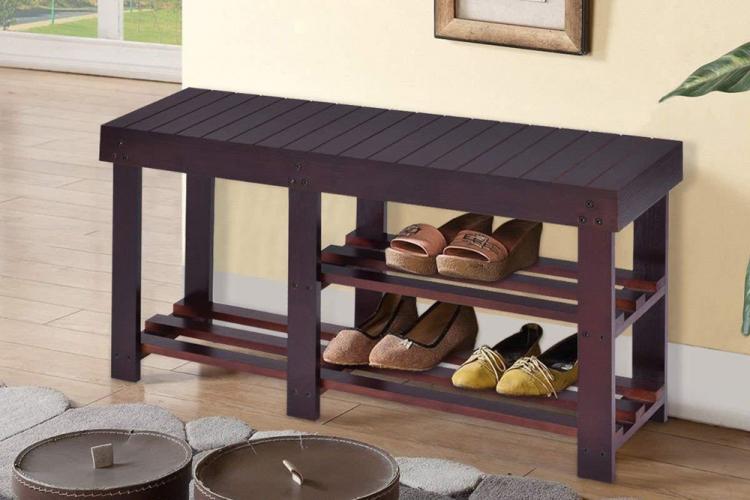
Built-in shoe racks
Like any built-in wardrobes, such shoe racks allow you to use the features of the room. For example, it can be built into a useless niche or thus hide defects in the walls. The design has only one drawback - it is completely stationary and cannot be moved.

Closed wardrobes
A shoe cabinet is a separate cabinet with doors, in which the shoes do not get dusty and hide in sight. They can be tall and narrow, classic or with vertical doors of different widths. Among the disadvantages are more impressive dimensions and the inability to immediately hide wet shoes.

Sideboards and chests of drawers
Cabinets and dressers usually differ in size from a wardrobe, therefore they are suitable for cramped living rooms with low ceilings. Traditionally, the chests of drawers are more spacious and the sideboards are smaller. Most often they are closed, but there are also open models.
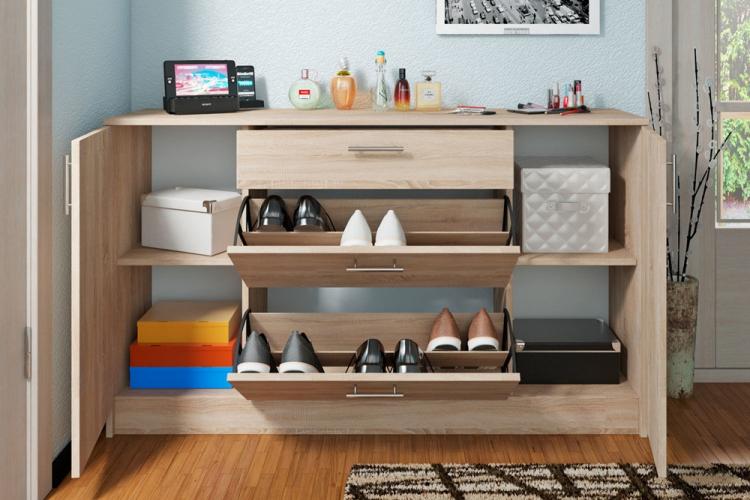
Combined shoe racks
This is the most practical option for individual layouts and interiors, although it will cost more. These shoe racks combine different types of sections and shelves to store all the shoes at once: seasonal, casual and home. Among the shortcomings, in addition to the price, there are also quite impressive dimensions.
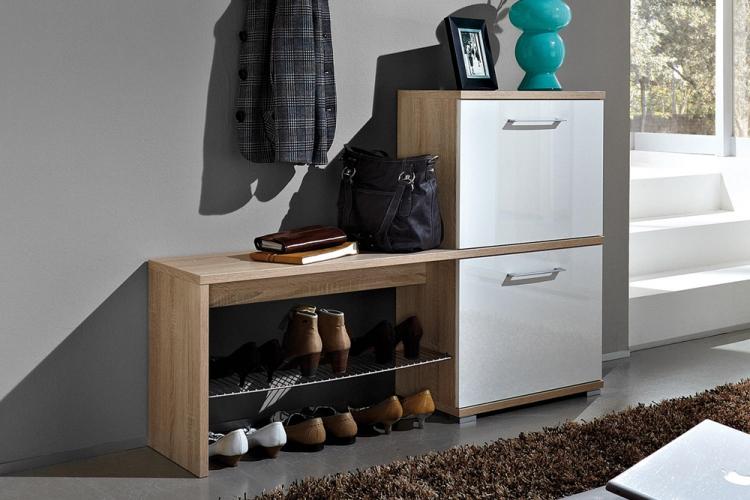
Materials for making shoe racks
For the manufacture of shoe racks, all the same materials are used as for any other furniture. Solid wood is spectacular and suitable for classic interiors, but expensive. Particleboard and MDF are simpler and more modern alternatives that are common in the manufacture of cabinet furniture.
Plastic is relatively inexpensive and durable if you choose the right variety. But it will only fit into modern styles, like hi-tech, and will not suit natural eco-interiors at all. Anti-corrosion coated metal is strong, durable and reliable, but it is better suited for open structures.

The dimensions of the shoe rack for the hallway
The easiest way is to calculate all sizes individually for your interior. But for a reference point, you can take a few average parameters. For example, the height of shoe benches is usually 50-55 cm, medium pedestal shelves - 60-120 cm, and high pencil cases may well be equal to a wardrobe. The length of the chests of drawers varies from 60 cm to 1.5 m for spacious hallways. The width on average varies from 40 to 70 cm, depending on which side and at what angle the shoes will stand.
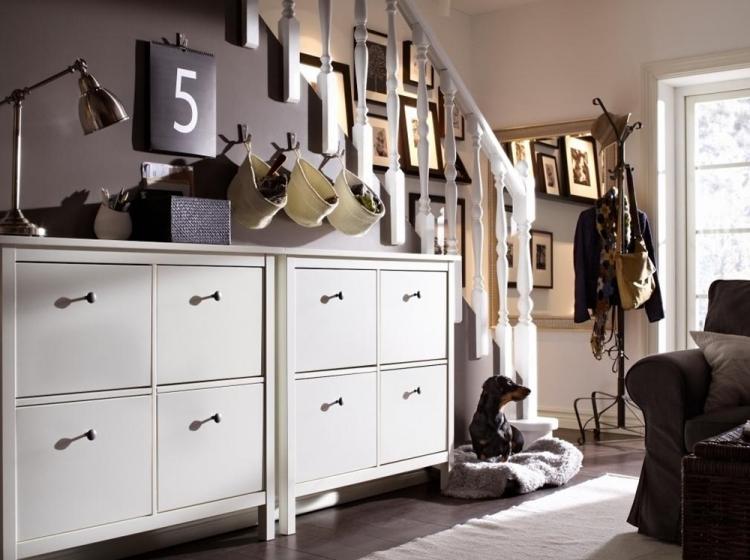
How to make a shoe rack yourself?
It is not necessary to buy a ready-made shoe rack in the hallway, because you can do it yourself. Especially if you need atypical sizes or special filling. It is enough to arm yourself with a standard set of tools - a tape measure, a level, a hammer, a drill, a drill and fasteners.
DIY shoe cabinet
First, you need to purchase the necessary fasteners and finished parts: metal corners, handles, adjustable legs, drawer guides, shelf holders. Of all the materials, it is easiest to work on your own with chipboard - just take into account the thickness of the plates when calculating.
Determine the correct dimensions, cut and sand all edges and edges with sandpaper and special adhesive tape. Calculate where the hinges, guides, fasteners will be and mark it all on the boards before starting the assembly. Start marking the holes from the bottom shelf, because it is solid and the main structure is attached to it.
For assembly, use self-tapping screws or confirmations and a drill of a suitable diameter. Step back from the edges so that the chipboard does not crack during the screed. To fix the shelves, use special metal holders that evenly distribute the load. And for all corner joints, use metal corners - they will give rigidity and stability.






DIY rotating shoe rack
Making a round revolving stand like in stores is not as difficult as it seems. You only need chipboard or plywood and several blanks of them: round for shelves and rectangular for cross-supports.
Mark even circles with a special large compass or with a regular thread. Sand all the cuts with a grinder or sandpaper and glue the edges with a special tape using an iron or hot air. From rectangular parts to self-tapping screws, assemble crosspieces and use them to connect adjacent circles to each other.
With a small diameter of the shelves, one central cross is enough, for large ones, several on different sides are better. And to make the structure rotate, attach a stand with a special mechanism from below, which are sold in furniture stores.

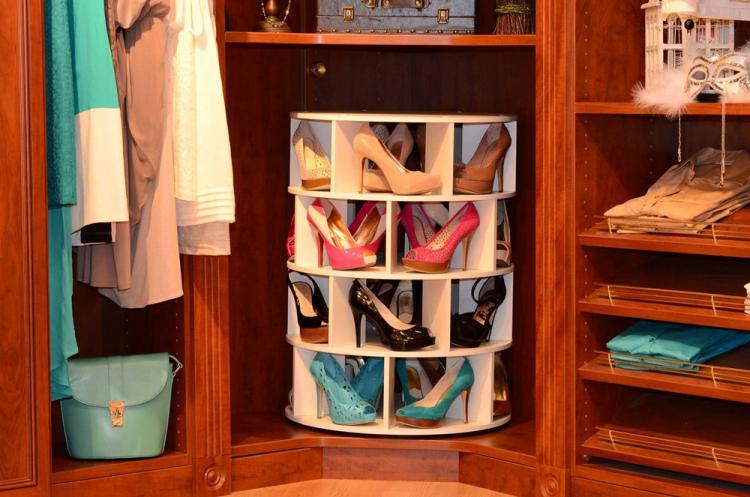
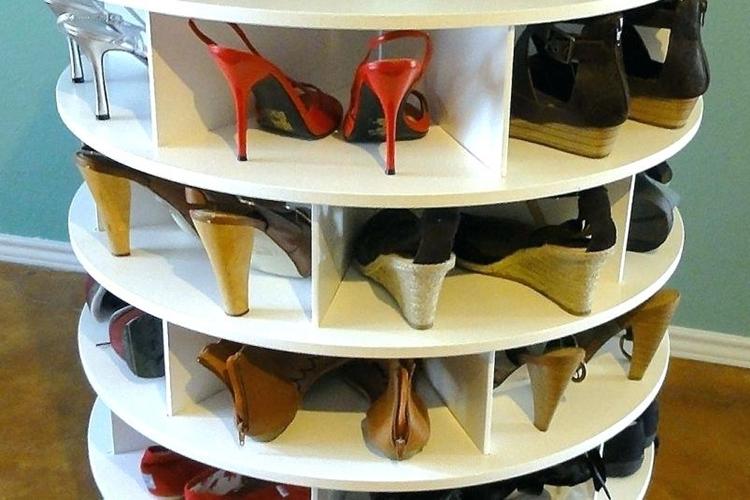
DIY cardboard shoe rack
For those who love hand-made and experiments, there is an interesting idea - a cardboard shoe rack. But you will need thick and high-strength cardboard, for example from under shoe boxes. And along with it is a furniture knife, a stapler with large staples, wide tape and wood glue or a gun.
Lay out a sheet of cardboard on a flat base or on the floor and mark rectangular sections about 30 cm high. Divide each rectangle into three parts and bend into an equilateral triangle. Glue the edges of future boxes with tape and connect them together using wood glue into a single structure.
This shoe rack can be placed on the floor, attached to the wall, or hung. It will interestingly complement Scandinavian interiors, boho, loft and eclectic styles. But keep in mind that the design is not too stable and durable, and most importantly, it is sensitive to moisture.
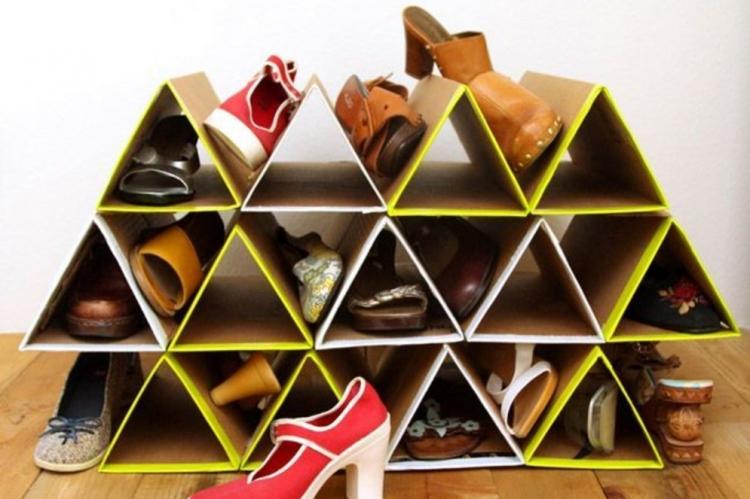

DIY metal profile shoe rack
The metal profile is great for open shelving and matches with glass shelves. This is an interesting solution for Scandinavian and modern interiors, hi-tech and loft. In addition to the profile itself, you will need a screwdriver, a grinder, a level, a jigsaw and a glass cutter.
The main task is to correctly measure and cut the metal profile into fragments of the required length. Then fix the main frame guides to the wall with self-tapping screws, not forgetting to monitor the level and verticals. After that, assemble the rest of the frame in the same way, and put shelves made of safety tempered glass on top of it.
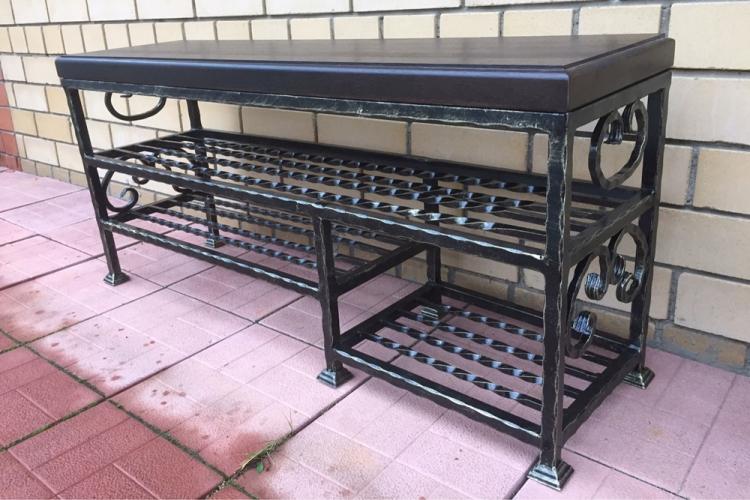

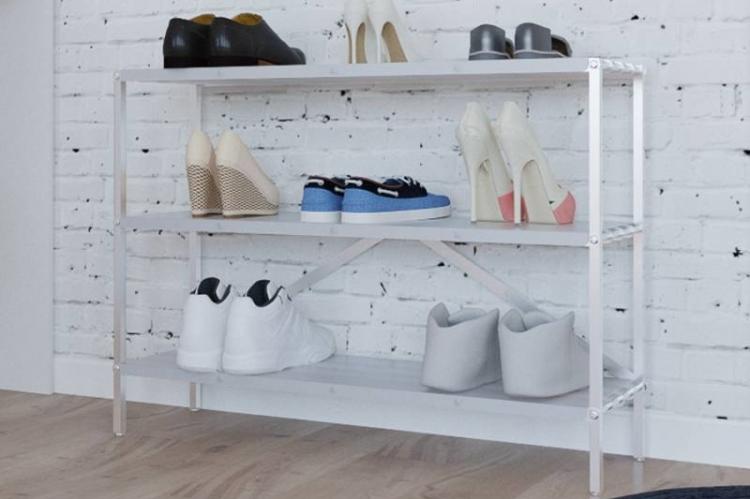
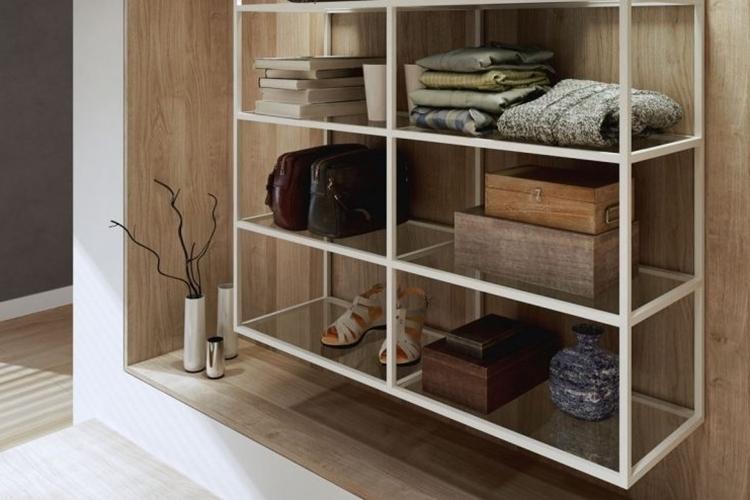
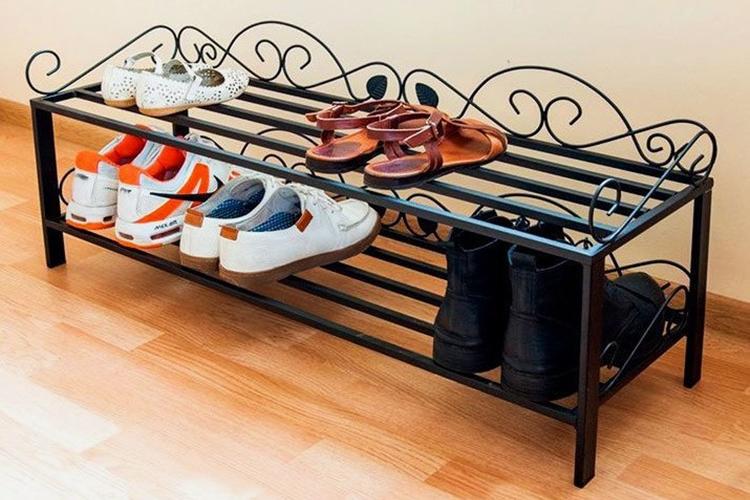
DIY pallet shoe rack
Furniture made of wooden boxes and pallets is in demand in the arrangement of country houses, in rustic styles or in eco-interiors. It will take you a maximum of several hours to assemble the structure, but first you need to get a building pallet of a suitable size.
After that, grind it with a machine or sandpaper, cover it with moisture-resistant impregnation and paint. It is enough to just lean the pallet against the wall, and you can already insert shoes into it. But this option is only suitable for slippers, sneakers and similar things.
By the same principle, you can assemble a structure from boxes. Divide the large ones into sections, and immediately connect the small ones to each other or fasten them to the wall in a chaotic manner. Such modular designs, painted in bright contrasting colors, look interesting. In the highest drawers, you can screw several shelves onto special holder corners.

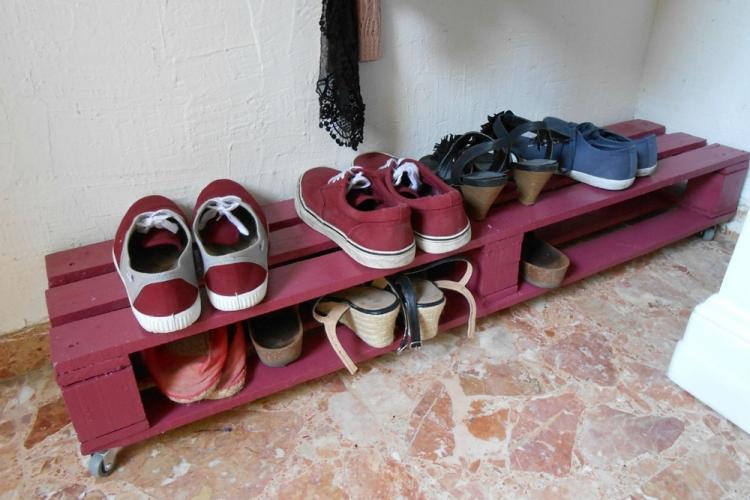
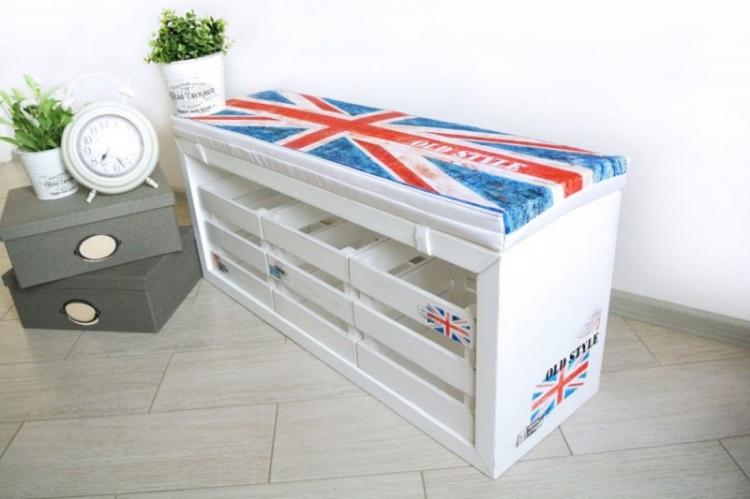

Shoe rack for a small hallway
For a small and narrow hallway, tall flat cabinets with vertically opening doors are best suited. If the room has low ceilings, pay attention to the same low wide pedestals, from which you can make a bench. Use joint systems: combine shoe racks with cupboards, stands, shoe hooks.
Less space in a small hallway is occupied by solid shelves instead of separate drawers and cells. Use the compact inset dividers and organizers to keep things organized. Pay attention to tall, flat models in which boots and shoes are stored at an angle.
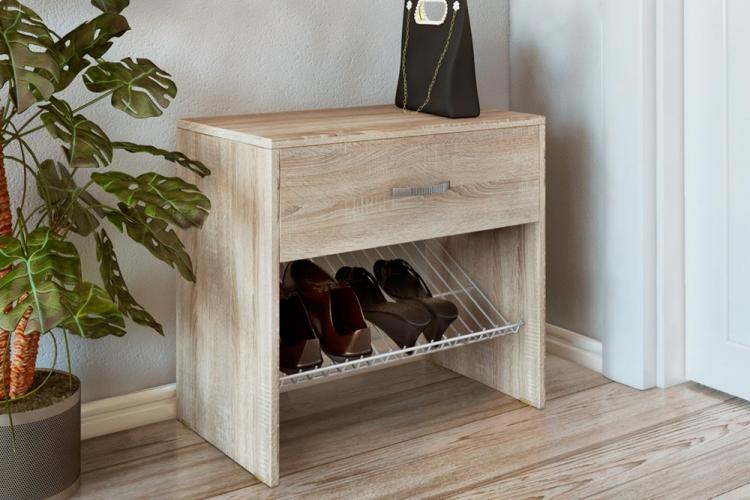
Shoe rack in the hallway - photo ideas
These are not all ways to organize convenient storage of shoes. With a shoe rack, the hallway will always be clean and tidy. And we have collected ideas on how to fit it into the interior in this photo selection!
